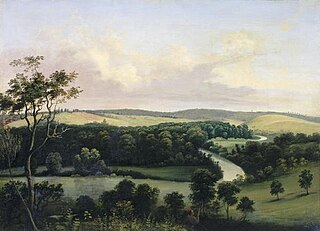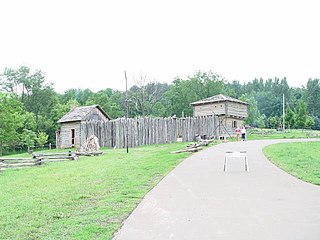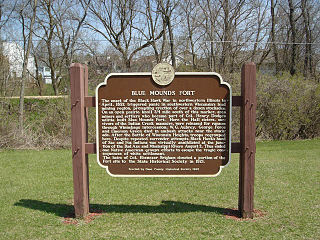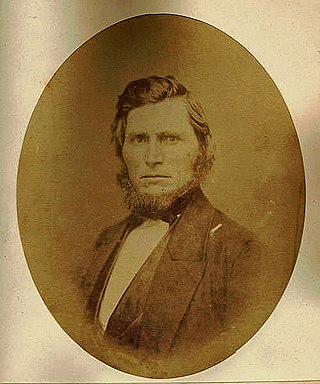
Lafayette County, sometimes spelled La Fayette County, is a county located in the U.S. state of Wisconsin. It was part of the Wisconsin Territory at the time of its founding. As of the 2020 census, the population was 16,611. Its county seat is Darlington. The county was named in honor of the Marquis de Lafayette, the French general who rendered assistance to the Continental Army in the American Revolutionary War. The courthouse scenes from the 2009 film Public Enemies were filmed at the Lafayette County Courthouse in Darlington.

Green County is a county located in the U.S. state of Wisconsin. As of the 2020 census, the population was 37,093. Its county seat is Monroe. Green County is included in the Madison, WI Metropolitan Statistical Area.

Shullsburg is a city in Lafayette County, Wisconsin, United States. The population was 1,226 at the 2010 census. The city is adjacent to the Town of Shullsburg. Founded in 1827 it is one of the oldest settlements in Wisconsin. There are 34 buildings listed on the National Register of Historic Places on its historic Water Street Commercial District. It is located within the Midwestern Driftless Area and is known for its history of lead mining and its cheese industry.

The Bad Axe Massacre was a massacre of Sauk (Sac) and Meskwaki (Fox) Native Americans by United States Army regulars and militia that occurred on August 1–2, 1832. This final scene of the Black Hawk War took place near present-day Victory, Wisconsin, in the United States. It marked the end of the war between white settlers and militia in Illinois and Michigan Territory, and the Sauk and Fox tribes under warrior Black Hawk.

The Battle of Horseshoe Bend, also referred to as the Battle of Pecatonica and the Battle of Bloody Lake, was fought on June 16, 1832 in present-day Wisconsin at an oxbow lake known as "Horseshoe Bend", which was formed by a change in course of the Pecatonica River. The battle was a major turning point in the Black Hawk War, despite being of only minor military significance. The small victory won by the U.S. militia at Horseshoe Bend helped restore public confidence in the volunteer force following an embarrassing defeat at Stillman's Run. The Battle of Horseshoe Bend ended with three militia men killed in action and a party of eleven Kickapoo warriors dead.

The Spafford Farm massacre, also referred to as the Wayne massacre, was an attack upon U.S. militia and civilians that occurred as part of the Black Hawk War near present-day South Wayne, Wisconsin. Spafford Farm was settled in 1830 by Omri Spafford and his partner Francis Spencer.

The Battle of Apple River Fort, occurred on the late afternoon of June 24, 1832 at the Apple River Fort, near present-day Elizabeth, Illinois, when Black Hawk and 200 of his "British Band" of Sauk and Fox were surprised by a group of four messengers en route from Galena, Illinois. One of the couriers was wounded in the thigh as the riders quickly made for the protection of the nearby stockade. Courier Fred Dixon lagged behind and provided cover for his comrades. The other couriers rode ahead to warn some 70 settlers of the approaching Sauk and Fox, thus saving their lives. The small company of militia at the fort, about 28-30 men and boys led by Captain Clack Stone, fought off Black Hawk's 150-man war party in an action that lasted about an hour. The withering pace of the gunfire eventually convinced Black Hawk that the fort was too heavily defended to lead a direct attack. He considered burning the fort, then switched to raiding cabins of foodstuffs, clothing and cooking utensils. In the gathering darkness, Black Hawk and his war party retreated.

The Battle of Waddams Grove, also known as the Battle of Yellow Creek was part of the Black Hawk War. It took place in present-day Stephenson County, Illinois on June 18, 1832. After several incidents of Sauk Indian raids on settlers along the Apple River, Captain James W. Stephenson left Galena with a group of volunteer militia in pursuit of the Native party. The group clashed on June 18, 1832 near Yellow Creek and the ensuing battle descended into a bayonet and knife fight in which several Sauk and three militia men were killed. Stephenson was severely wounded by a musketball to the chest during the fighting. The dead were eventually interred in a memorial cemetery in Kellogg's Grove, Illinois where a stone monument was erected in memory of those killed during the war.

The attacks at Fort Blue Mounds were two separate incidents which occurred on June 6 and 20, 1832, as part of the Black Hawk War. In the first incident, area residents attributed the killing of a miner to a band of Ho-Chunk warriors, and concluded that more Ho-Chunk planned to join Black Hawk in his war against white settlers. The second incident occurred east of the fort as a Sauk raiding party, estimated by eyewitnesses to be as large as 100 warriors, attacked two militiamen who were investigating noises heard the night before. Two members of the militia stationed at Blue Mounds were killed in the attack, and both their bodies were badly mutilated.
The Sinsinawa Mound raid occurred on June 29, 1832, near the Sinsinawa mining settlement in Michigan Territory. This incident, part of the Black Hawk War, resulted in the deaths of two men; a third man survived by seeking cover in a nearby blockhouse. In the aftermath of the raid, Captain James W. Stephenson set out to pursue the attackers—a straggling band of Sauk Native Americans—but lost their trail at the Mississippi River. The attack occurred in the same week as other skirmishes and raids, and as a result helped contribute to the growing fear in the region. The raid caused the residents of nearby Platteville to consider fleeing their settlement.
After the outbreak of the Black Hawk War, at the Battle of Stillman's Run in May 1832, there were minor attacks and skirmishes throughout the duration of the conflict. The war was fought between white settlers in Illinois and present-day Wisconsin and Sauk Chief Black Hawk. The relatively minor attacks of the war were widely dispersed and often carried out by bands of Native Americans that were unaffiliated with Black Hawk's British Band.
Clack Stone was the elected captain of the “Apple River“ Company, 27th Regiment Illinois Militia during the Black Hawk War of 1832. He was in charge of a company mustered into service in May 1832 from Jo Daviess County, Illinois. Stone's company manned Apple River Fort, a log stockade and blockhouse— a reconstruction of which is located on knoll just east of present-day Elizabeth Stone provided leadership during two war-related incidents. In the first event, some horses were stolen from the fort during the night of June 17, in the prelude to the June 18 action known then as “Stephenson’s Fight.” Today, the fight is erroneously known as the Battle of Waddams Grove. The second event was on the afternoon of June 24: an intense battle known as the Battle of Apple River Fort. After the war, Stone built and operated a general store and helped Redding Bennett, John D. Winters, and others survey and lay out lot lines for the proposed village of Elizabeth. He also owned and apparently operated for a time the “Eagle Saloon” in Galena. Stone laid claim to numerous land parcels located west of the present village. He remained in today's Jo Daviess County with his common law wife Delilah Hickman for several years, then moved south to Union Grove in what is now Carroll County, Illinois.

Colonel Henry Gratiot was a French-American pioneer, farmer, and mill owner. During the Winnebago and Black Hawk Wars, he acted as both an intermediary and early U.S. Indian agent to the Winnebagos throughout the early 19th century. He and his brother Jean Pierre were among the first pioneers to settle in Wisconsin, operating a successful lead mining and lead smelting business, during the 1820s and 1830s. Both, the present-day village of Gratiot, Wisconsin and the town of Gratiot (town), Wisconsin are named in his honor.
Ebenezer Brigham was a 19th-century American pioneer, businessman, and politician. He was one of the first Americans to explore southwestern Wisconsin and the first permanent settler in present-day Dane County, Wisconsin. A militia officer during the Black Hawk War, he served as commander of Fort Blue Mounds and was active in both the Wisconsin territorial council, and the Wisconsin State Assembly during the 1840s and 1850s.

Fort Union was a frontier fort at Dodgeville, Wisconsin, United States, during the 1832 Black Hawk War. It served as military commander Henry Dodge's headquarters during that war.
The Court of Appeal of Alberta is a Canadian appellate court that serves as the highest appellate court in the jurisdiction of Alberta, subordinate to the Supreme Court of Canada.

Eugene William "Gene" Oberle was an American farmer and politician.

Absalom Austin Townsend was an American miner and prospector. He was a pioneer of the Wisconsin lead-mining region and the California gold rush.













